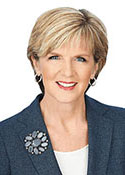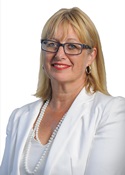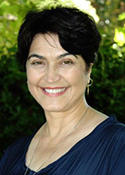Curtin
Margin: Liberal 18.7%
Region: Western Perth, Western Australia
In a nutshell: Despite bearing the name of an iconic Labor figure, Julie Bishop’s electorate of Curtin covers affluent conservative-voting territory in Perth’s western suburbs.
Candidates in ballot paper order

|
DAVID ARCHIBALD VIV GLANCE MELISSA CALLANAN SANDRA BOULTER JULIE BISHOP |
Julie Bishop’s safe Liberal seat of Curtin covers Perth’s most affluent and Liberal-friendly areas, from Mosman Park and Cottesloe north along the coast to the southern part of Scarborough, and along the northern shore of the Swan River through the prestige suburbs of Peppermint Grove and Dalkeith. An area of relative Labor strength is provided by the area immediately west of the city. The electorate was created with the expansion of parliament in 1949, prior to which the Perth metropolitan area had been divided in highly variable fashion between Perth and Fremantle, with each consistently accounting for some of the area of modern Curtin. Curtin was originally limited to Perth’s inner west, with Fremantle continuing to extend up the coast as far as City Beach, before acquiring its coastal orientation with the redistribution of 1955. Fremantle was thereafter concentrated more to the south of the river, although its present northern limit at the suburban boundary of North Fremantle and Mosman Park was not established until 1984.
Despite bearing the name of a Labor Party legend, Curtin has been a blue-ribbon Liberal seat since its creation, being held first by prime ministerial contender and future Governor-General Paul Hasluck, and then by Victor Garland, a minister in the McMahon and Fraser governments. Garland’s resignation in early 1981 led to a preselection brawl in which the then Premier, Sir Charles Court, marshaled forces behind Allan Rocher to thwart Fred Chaney’s ambition to move from the Senate to the House, which he would eventually realise when he became member for Pearce in 1990. Rocher was defeated for preselection ahead of the 1996 election by Ken Court, son of the aforementioned Charles and brother of Richard, who was then Premier. This greatly displeased the newly reinstalled federal Liberal leader, John Howard, who did little to assist Court’s election campaign or to dispel the conception that he owed his preselection to controversial party powerbroker Noel Crichton-Browne. Rocher was thus easily able to retain his seat as an independent on Labor preferences, while a similar story played out in the northern suburbs seat of Moore.
Curtin returned to the Liberal fold in 1998 when Rocher was defeated by a new Liberal candidate, Julie Bishop, who had previously been a managing partner at law firm Clayton Utz. Bishop’s early career progress within the Howard government was reckoned to have been constrained by her ties to Peter Costello, and in the wake of the Coalition’s 2001 state election defeat she signed on to an abortive scheme to move into state politics to succeed Richard Court as Liberal leader. She eventually won promotion to Ageing Minister in 2003, and attained cabinet rank as Education, Science and Training Minister in January 2006. Reflecting the continuing strong performance of the party’s Western Australian branch, she was elevated to the deputy leadership in the wake of the 2007 election defeat.
Bishop’s success in maintaining that position under three leaders reportedly led internal critics to dub her “the cockroach”, although dissatisfaction with her performance as Shadow Treasurer caused her to be reassigned to foreign affairs in January 2009. She retained the portfolio throughout the remaining years in opposition, further serving in the shadow portfolio of trade after the 2010 election, and was confirmed as Foreign Minister with the election of the Abbott government in September 2013. On the day of Malcolm Turnbull’s September 2015 leadership challenge she advised Tony Abbott he had lost the confidence of the party room, but reportedly intended to vote for him until he declared her own position open as well as his. She was then challenged by Abbott loyalist Kevin Andrews, whom she defeated 70 votes to 30.
Analysis by William Bowe. Read William’s blog, The Poll Bludger.


